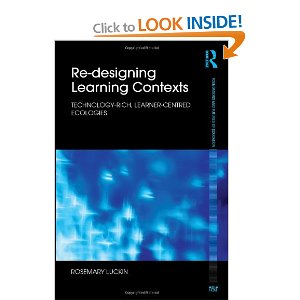I continue with the theme of Artificial Intelligence and how its tools and techniques can usefully be applied to education. The falling cost of technology combined with the increasing ubiquity and acceptance of Artificial Intelligence bring huge possibilities for building better software and hardware to support people to learn, teach, work and manage more effectively than ever before. The idea of an intelligent assistant for everyone is now a realistic possibility. Imagine how much more satisfying a teacher’s job might become if they had their own personal Artificially Intelligent teaching assistant who could, under their direction, take over teaching a group of students who need help with a particular area of the curriculum: quadratic equations in maths perhaps. Of course, for this to work, it’s essential that the design of such assistants is driven by the needs of teachers and learners and the principles of the Learning Sciences, rather than the capabilities of the technology and its developers. So we need to keep raising our voices for user centred design for EdTech.
But the future of Artificial Intelligence within education can be about so much more than bigger and better systems, there are opportunities to offer something different to teachers and learners. For example, there are some interesting opportunities that arise from the continuing development of wearable computing and the Internet of Things: the network of objects or “things” with embedded computing systems, sensors and network connectivity that can be interconnected with any other network enabled objects or machines. If we think about the Internet of Things as a set of tools through which students can learn about other subjects, such as science or engineering, then we can use them to embrace and enhance the increasingly popular practice-based approach to teaching. Practice-based activities build on the popularity of the ‘Makers Movement’[1] and differ considerably in what they ask students to do and what they are trying to teach. They tend to be open-ended and hands-on, they involve collaborative problem solving processes and can include physical computing and the Internet of Things as tools for learning.
Internet of Things technologies will make it much easier for Artificially Intelligent systems to model the physical body and its movements. These models will then be available for use in educational systems that can be designed to help with tasks such as designing and constructing an artefact in engineering, setting up an experiment in science and simpler individual tasks, such as drawing or writing. The combination of principles and techniques from the Learning Sciences, the Internet of Things technologies as learning tools and the application of Artificial Intelligence to support the learning process can ensure that the Internet of Things becomes the Internet of Thingking for learners and teachers.
![[ File # csp2108410, License # 1307856 ] Licensed through http://www.canstockphoto.com in accordance with the End User License Agreement (http://www.canstockphoto.com/legal.php) (c) Can Stock Photo Inc. / lenm](https://knowledgeillusion.files.wordpress.com/2015/11/6troy8nac.jpg?w=300&h=200)
[ File # csp2108410, License # 1307856 ]
Licensed through http://www.canstockphoto.com in accordance with the End User License Agreement (http://www.canstockphoto.com/legal.php)
(c) Can Stock Photo Inc. / lenm
[1] Halverson, E. R., & Sheridan, K. M. (2014). The Maker Movement in Education. Harvard Educational Review, 84(4), 495-506.

